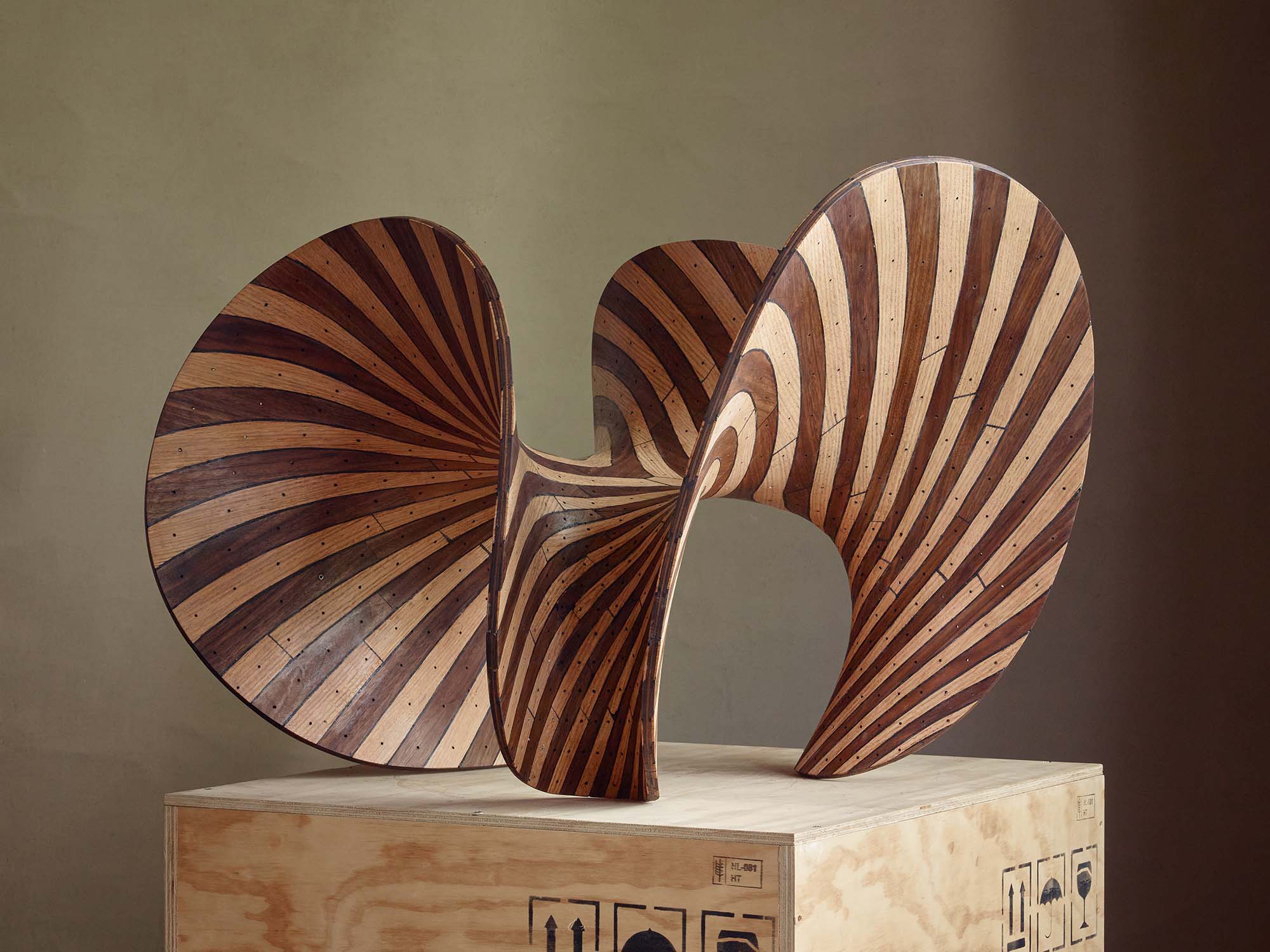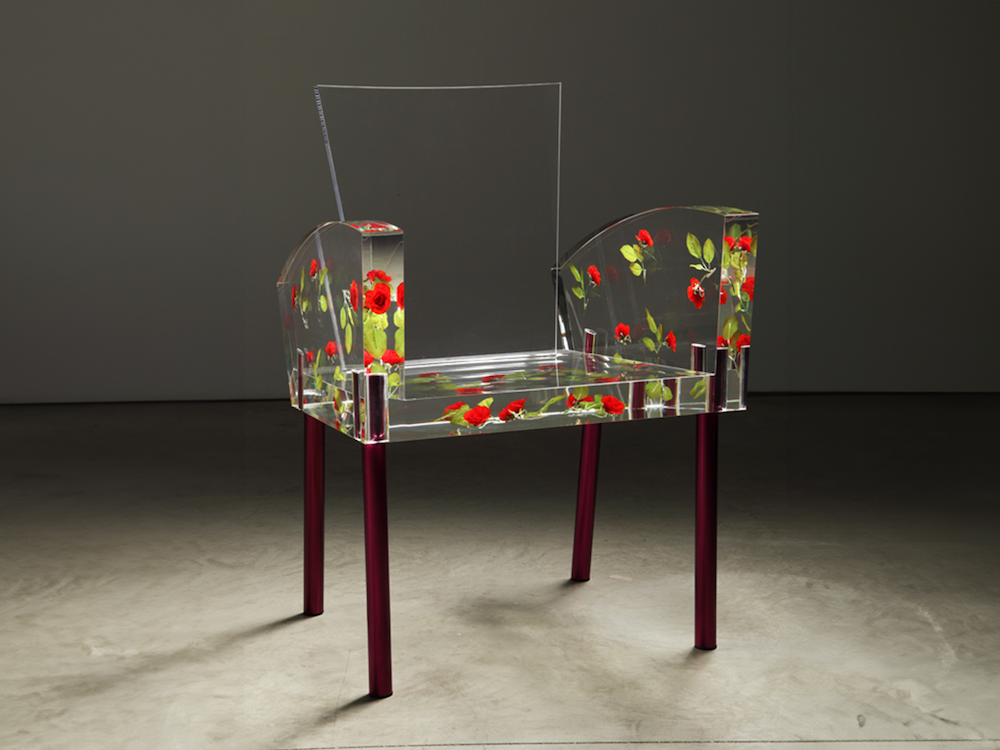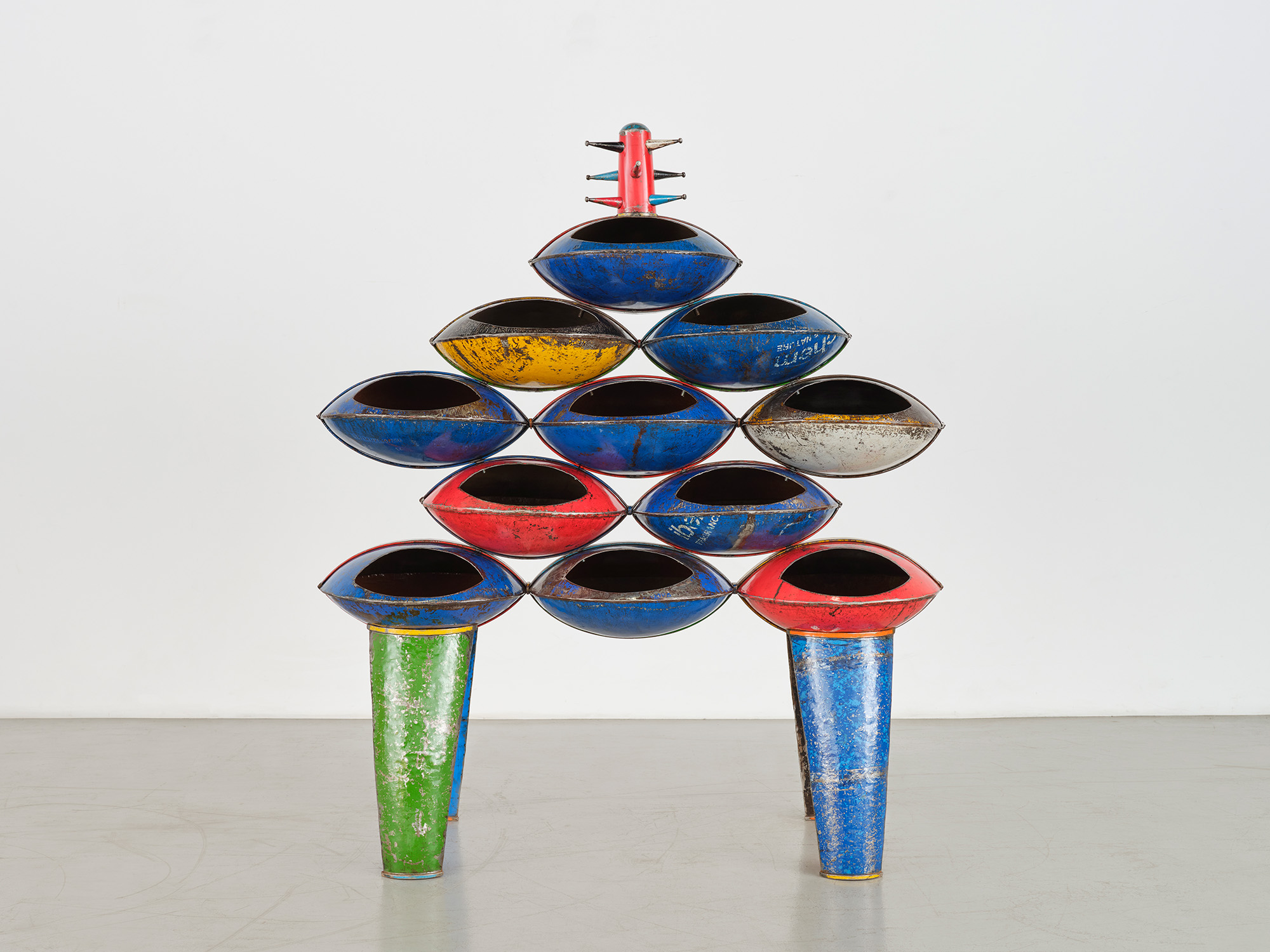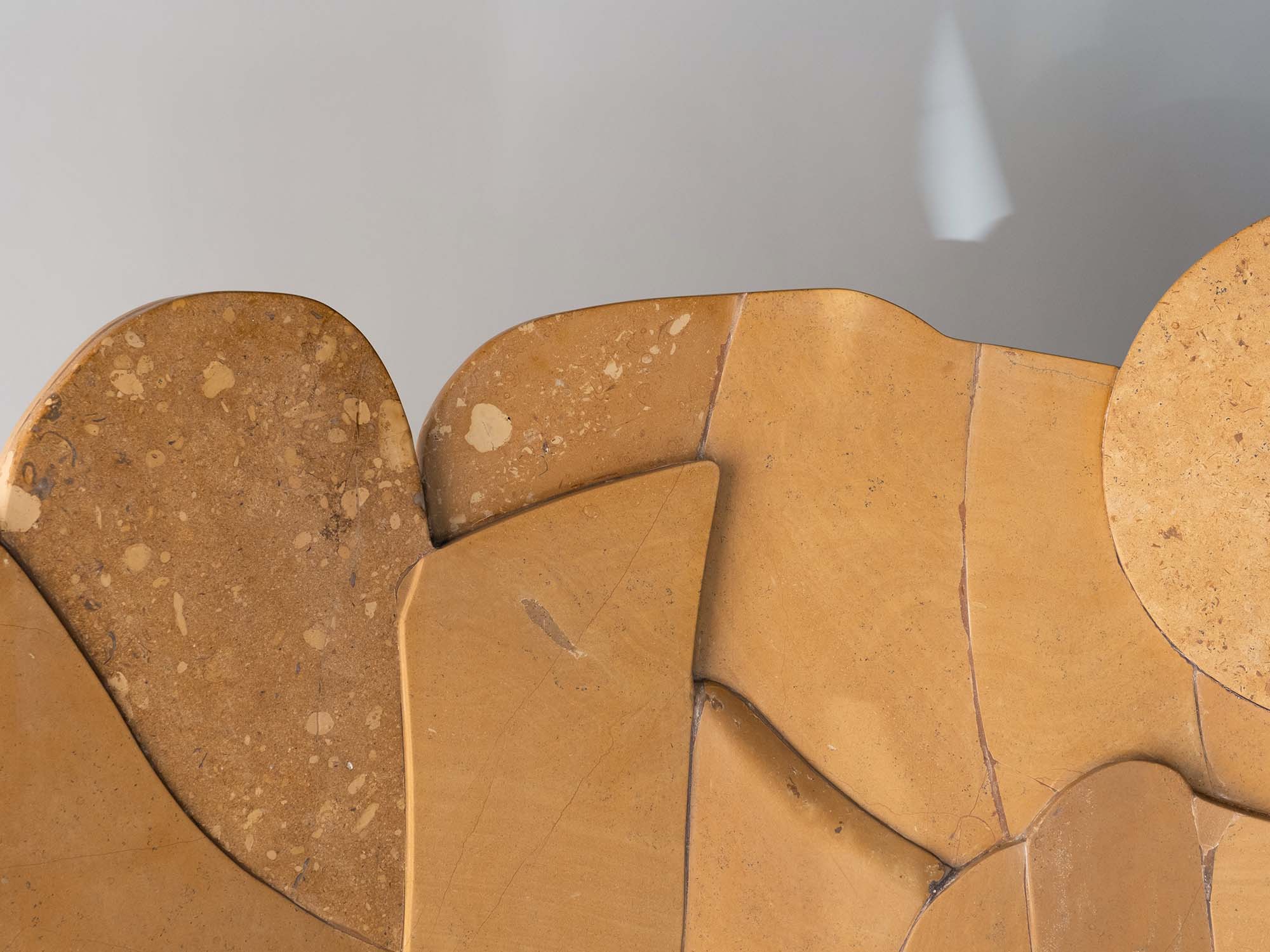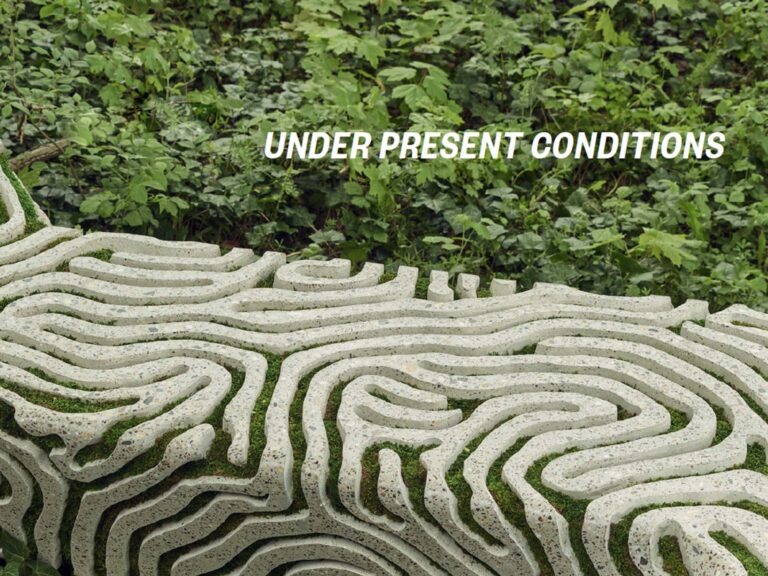By Glenn Adamson
Imagine a chair that is fully biodegradable. If placed in the woods, it will eventually return to the earth from whence it came, leaving no trace. Given this parameter, what do you picture? Something a bit lumpy, probably, cardboard-like and almost certainly beige, perhaps made from compressed hemp or mycelium fibers.
Now look at the Ply Loop Chair, the latest emanation of the design powerhouse that is Joris Laarman Lab. Lumpy it most certainly is not. It may take a moment even to recognize it as a chair: more like a vortex, held in suspended animation. Those familiar with Laarman’s previous work, from his breakthrough Bone furniture series through successive experiments in additive technology (including the ultimate in freeform fabrication technologies, MX3D), won’t be surprised by the incredible dynamism of the form, or the way it is enhanced by a twisting, chevron-like pattern. In its overall construction, it resembles some of his earlier Maker chairs, intensive exercises in mass-customization which were similarly assembled from individually-shaped components. Like those designs, and everything else in Laarman’s oeuvre, the Ply Loop chair hits a sweet spot between the functional and the sculptural. He demonstrates that even the most thoroughly investigated design typologies can always be reinvented.
What is a surprise is the chair’s extreme sustainability, which holds promise for global industry. Typically, plywood is extremely ecologically unfriendly. The material may have a distinguished place within the history of design – having been used to iconic effect by Gerald Summers, Alvar Aalto, Charles and Ray Eames, Sori Yanagi, and many others – from the environmental point of view, it is highly problematic. As was made clear in an exhibition about plywood at the V&A, in 2017, the history of the material is actually a story about glue. The thin veneers of wood have not changed much since the nineteenth century, but adhesive technology has constantly advanced. While there have been attempts to ameliorate its ecological impact – by eliminating formaldehyde from the adhesive formula, for example – but these glues are not biodegradable in natural circumstances; and in fact, they degrade even faster into polluting microparticles than normal plastics do. The goal of a fully biodegradable plywood has remained elusive.
Until now. The seemingly magic ingredient of the Ply Loop chair is Plantics, developed by a company in Arnhem, in the Netherlands, with Laarman Lab as an advisor and shareholder. This new 100% plant-based resin is not only biodegradable but also completely non-toxic (“I tasted it,” Laarman notes), and what’s more, is compounded of ingredients made from agricultural waste streams. Patented worldwide, Plantics has the potential to revolutionize not just furniture, but a wide range of other industries, from foam insulation to packaging. From a manufacturing point of view, it presents certain challenges and opportunities. The sticky, sugary substance of Plantics must be heat-cured to fix it. Amazingly, the curing is also reversible, through a technique they call only process X. This means that the chair can be disassembled into its constituent elements and glue, which can then be fully re-used for other purposes. (This also works with other materials, like carbon and glass fiber.)
From a craft point of view, Plantics is ideal in many ways. First of all, unlike conventional adhesives of comparable durability, it is totally safe – non-carcinogenic and workable with bare hands. It can also be worked with over a long period, at varying degrees of stiffness and viscosity. This quality is fully exploited in the Ply Loop chair, which is rather complex to assemble. Laarman and his team are currently exploring the countless new possibilities of this material, including a biodegradable surfboard made in a Plantics composite of high-performance fibers.
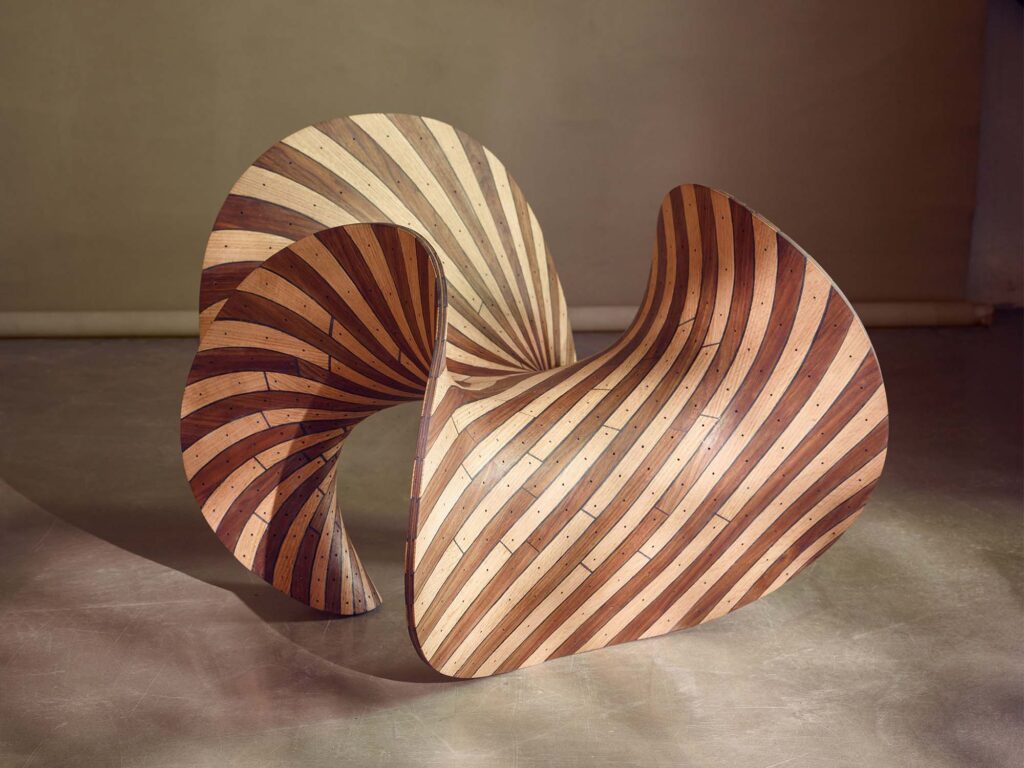
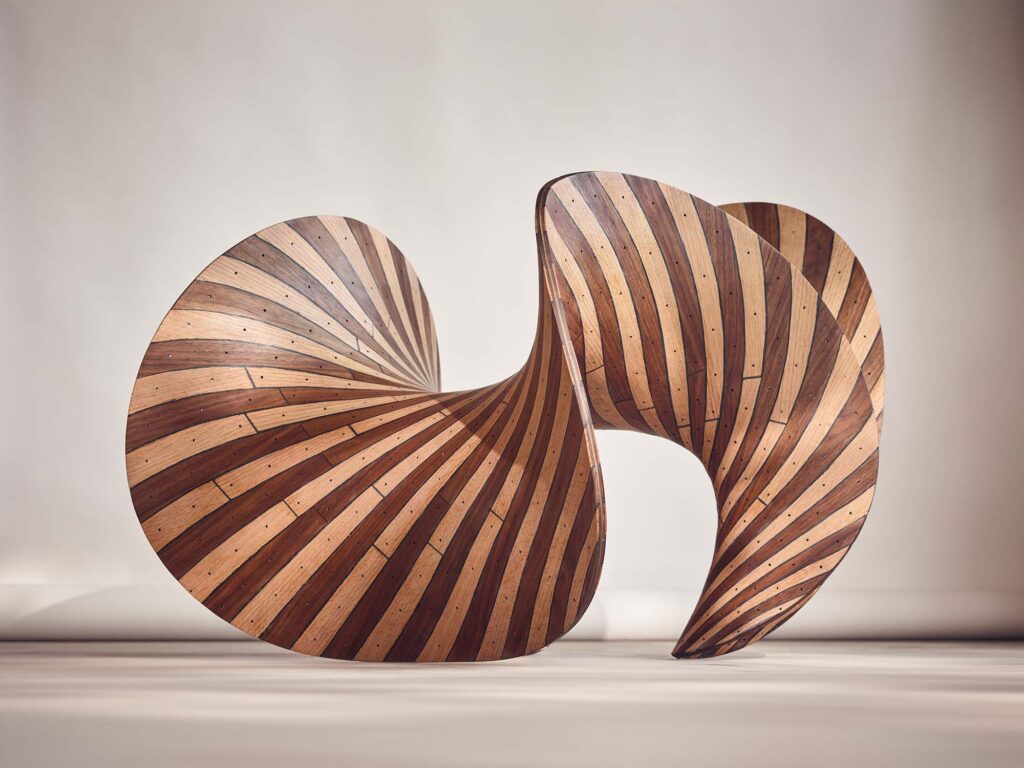
Over the past few years, he and his partner Anita Star have moved their family and studio to a place called Hembrug, outside Amsterdam. For a century or so, the site was used for various military purposes; now it has been reclaimed for ecologically-minded workshops and residences. The vibe of Laarman’s lab itself is part community, part tech start-up, part artist’s atelier. “Work and life are always entangled,” says Laarman, “and if not, something feels wrong.”
This holistic experience is infusing all the work of the lab, which has been dedicating itself to progressive experimentation, mostly in the form of 3D objects: learning by doing, carving out possible scenarios of the future, finding out what makes sense and what doesn’t. Working with various new materials and manufacturing techniques – sand, moss, recyclable concrete – developed in intensive “sprints” of experimentation. This approach involves a lot of blue-sky thinking; Laarman has considered making a Plantics-based work impregnated with seeds, so that if it came to the end of its life as furniture, it could turn into a garden. Any given project may lead to a mass-producible product, or even a separate startup company (as was the case with MX3D), but initially, it is always about getting on the learning curve, following the logic of the process wherever it may lead, and having fun while doing it. The Ply Loop chair itself is obviously not meant for mass production, but its expressive form and labor-intensive construction help teach the studio everything there is to know about this new material and ways it can be applied. The next step is to work with strategic partners to transform industries into more symbiotic production, in order to make a real-world difference.
Laarman and Star also ponder the politics of their plans, the place they might carve out within the emergent “symbiocene” – a term coined by Australian environmentalist Glenn Albrecht, designating the new era of harmony between nature, culture that we have to find, at a global scale. Importantly, technology is part of this picture: it’s not about abandoning advanced solutions, but binding them into a holistic relation to the environment. This is an ambitious context in which to work, creatively, perhaps even an overwhelming one due to its scale – yet it is the context where we all find ourselves. Laarman is at the experimental forefront of those who are confronting that reality, head-on. The Ply Loop chair, like other innovations coming out of his studio, is just one precise intervention. Its implications, however, are enormous: a glimpse not just of what design could become, but what it absolutely needs to be.
